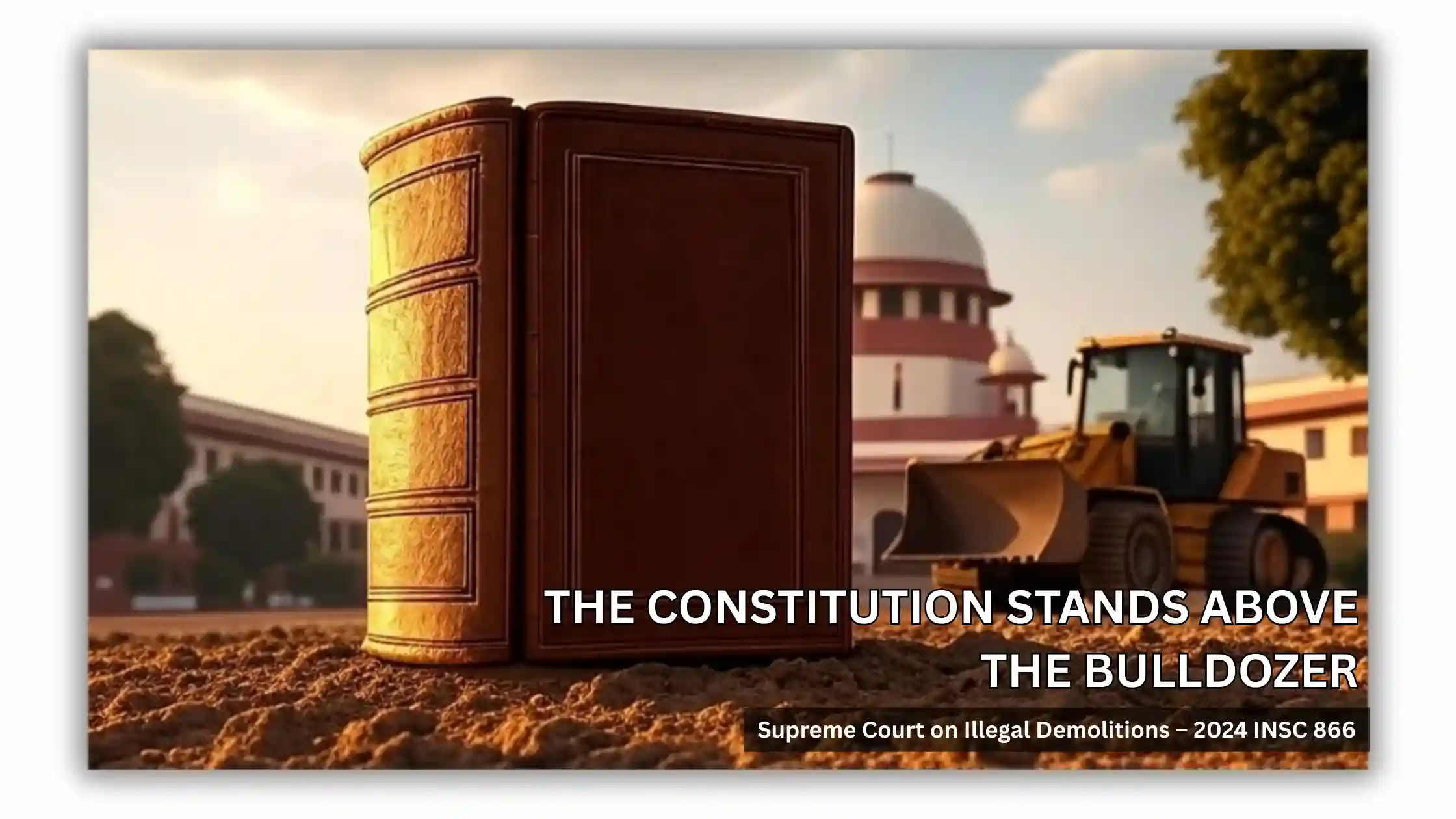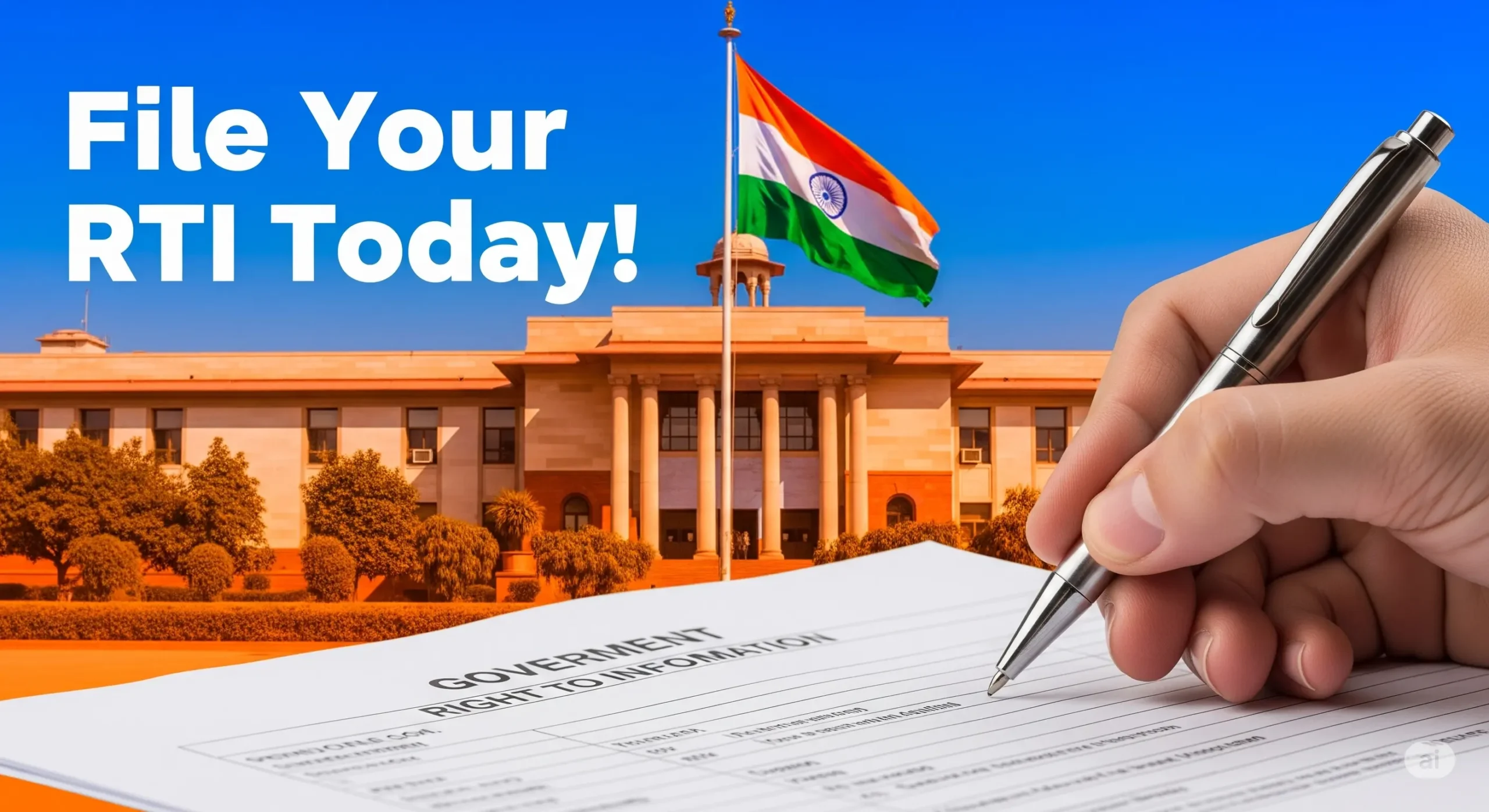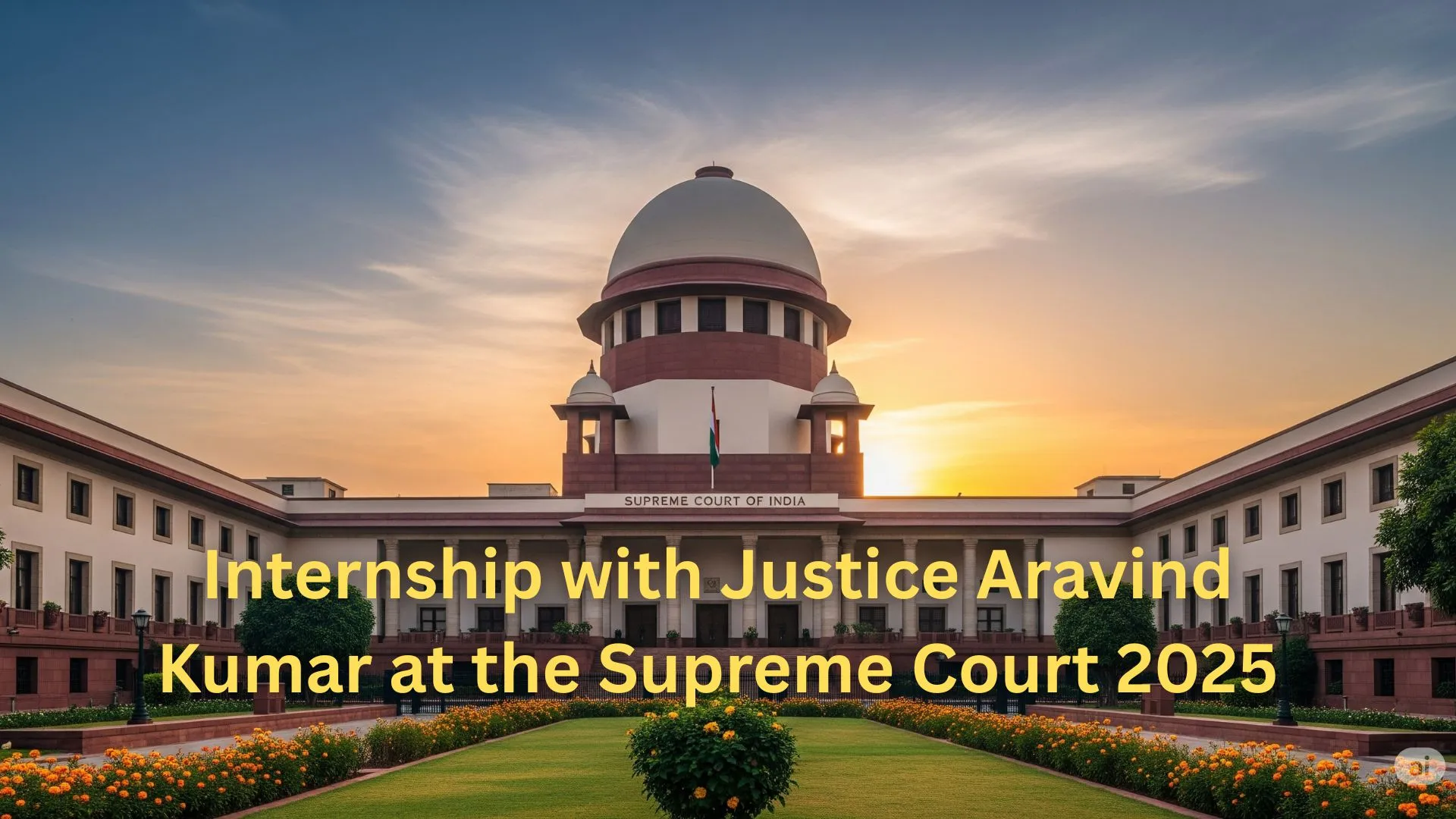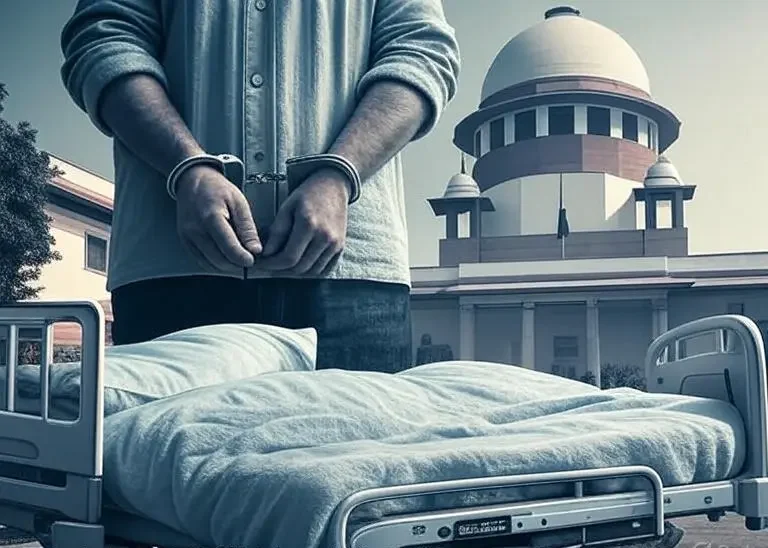This is one of those cases that forces us to stop and ask – how far can the State go in the name of law and order?
The Supreme Court of India’s judgment in In Re: Directions in the matter of demolition of structures (2024 INSC 866) has turned into a landmark moment on the balance between property rights, criminal justice, and executive power.
The case came from citizens across India who saw their homes and shops demolished overnight – without notice, without trial – simply because they were accused of crimes. Not convicted. Just accused.
The larger issue was clear: Can the State punish people by demolishing their homes without following due process? Or does that destroy the very foundation of our Constitution?
Brief Facts of the Case
- Multiple writ petitions under Article 32 of the Constitution were filed. Petitioners alleged that State authorities had demolished houses and shops of people accused of criminal offences, without serving any prior notice or following legal process.
- The controversy gained national attention after the Jahangirpuri, Delhi incident (2022) where bulldozers rolled in after a communal clash.
- Allegations arose of selective targeting – certain groups and communities were being punished disproportionately.
- Taking note, the Supreme Court stepped in and passed interim orders banning demolitions without judicial permission – paving the way for this detailed, nationwide judgment.
Legal Issues
- Does demolition without due process violate the fundamental rights of the accused under Articles 14 and 21?
- Can the executive (State) lawfully demolish the property of an accused or convict without judicial sanction?
- Does this amount to collective punishment, violating the doctrines of the rule of law, the separation of powers, and public trust?
- What guidelines should regulate demolitions so that natural justice and transparency are not compromised?
Arguments of the Parties
Petitioners’ Arguments
- Violation of Rights: Demolitions were an abuse of power and a direct hit on constitutional rights.
- No Notice: Many victims never got a chance to present their side – a blatant violation of Article 21 (Right to Life and Personal Liberty).
- Punitive Action: Demolition is not administrative. It is punishment – and punishing without trial violates the presumption of innocence.
- Separation of Powers Breached: The executive cannot play judge. By demolishing houses of accused persons, it assumed the powers of the judiciary.
- Targeted Bias: Petitioners alleged selective targeting of communities, creating mistrust in the rule of law.
Respondents’ Arguments
- Municipal Law Defence: The State argued that demolitions were carried out under municipal laws, which allow the removal of unauthorised constructions.
- Administrative Action: According to the State, these were routine urban planning measures – not punishment.
- Public Order: The State claimed that unauthorised properties were often used by criminals for unlawful activities, making demolition necessary.
- No Need for Judicial Sanction: They insisted municipal laws permit immediate demolition of illegal encroachments, especially on public land.
Judgement & Decision
Violation of Article 21
The Supreme Court was unambiguous – no citizen can be deprived of property or shelter without due process and judicial oversight.
Demolitions as punishment, without trial, amount to collective punishment, which is unconstitutional.
Guidelines Issued
The Court laid down a step-by-step mandatory process:
- Prior show cause notice (minimum 15 days).
- Fair hearing for the affected party.
- Final written notice before demolition.
- Complete documentation of the process.
- Strict checks against dual violations (criminal allegation + demolition).
Upholding Separation of Powers
The Court reminded that the judiciary alone decides guilt. The executive cannot punish by bulldozing houses. Doing so violates the doctrine of public trust and the principle of separation of powers.
Accountability of Officials
- Victims of illegal demolitions are entitled to compensation.
- Officials who ordered unlawful demolitions will be held personally liable.
Doctrines Involved
- Rule of Law: No person – even the accused – is outside the protection of law.
- Separation of Powers: The executive cannot assume judicial powers.
- Rights of the Accused: Article 21 ensures dignity and due process even for those facing criminal allegations.
Significance & Impact
It doesn’t just end a single incident but redraws the boundaries of State power in India.Social property and material property shall be protected by the clear line the Supreme Court drew in the ruling. It is telling us if you have no constitutional background, bulldozer activities cannot supplant law.As a result, it also authorizes a check for executive power and it shows trust in democracy by protecting people from an unconstitutional state. For the first time, it is providing an accountability measure. Officials have been made specifically responsible for illegal demolitions. This responsibility is not just a hollow formality, then the Court meant it to work fear of illegitimate activity and let people know governance has to be conducted always on the foundations of fairness, justice and transparency.
Conclusion
The Supreme Court’s judgment in In Re: Directions in the Matter of Demolition of Structures (2024 INSC 866) is more than just a ruling on bulldozers — it is a statement on the soul of our democracy.
It reminds us that even the weakest citizen cannot be crushed by State excesses. Fundamental rights cannot be bulldozed. Executive power has limits. The rule of law is non-negotiable.
By laying down clear guidelines, demanding accountability, and protecting due process, the Court has sent out a strong message — in India, no bulldozer is bigger than the Constitution.








